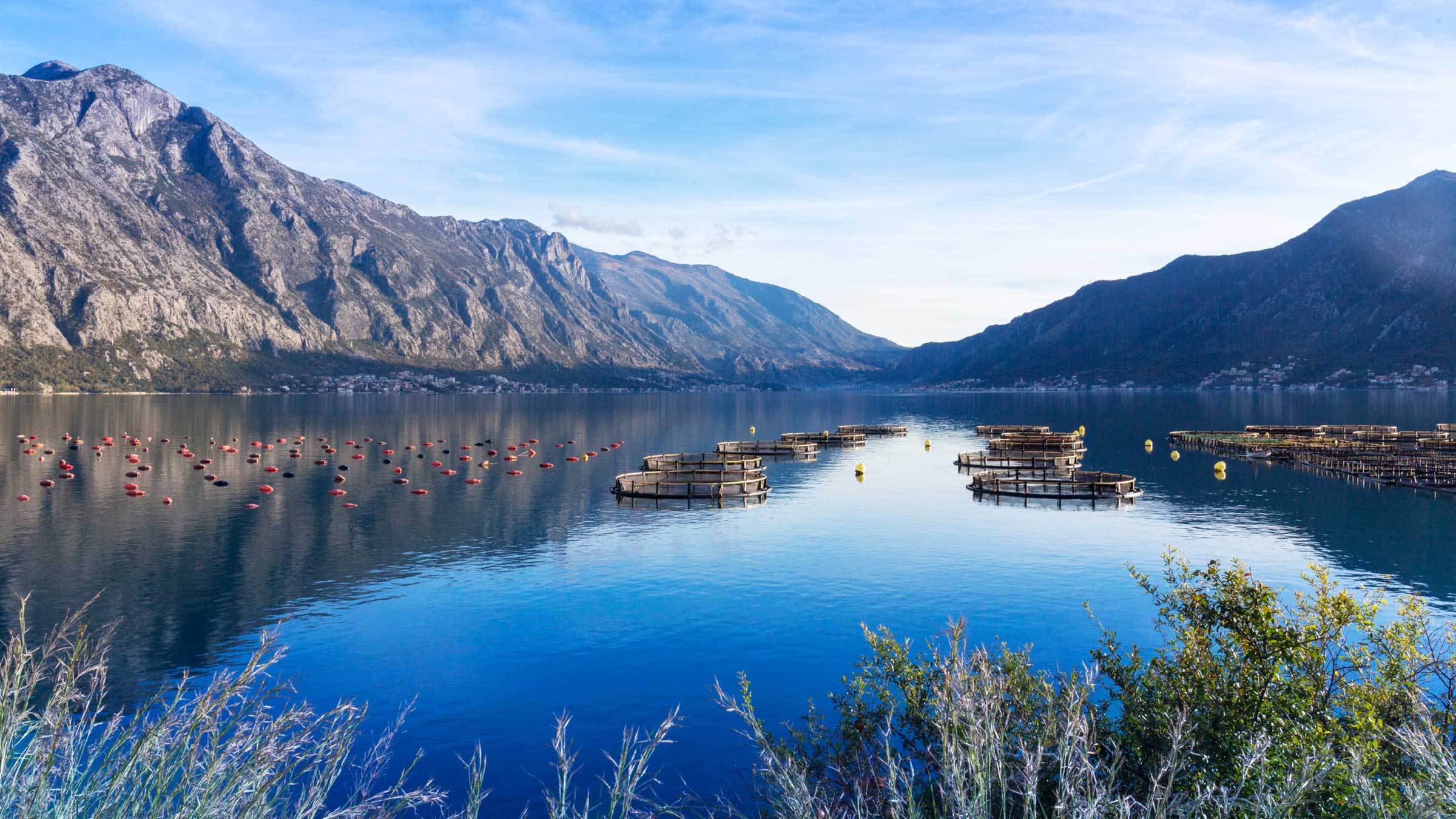
Raising nutrients from the ashes of fish sludge with AQUAPHOENIX
EasyMining is part of an ambitious EU-funded project to turn aquaculture waste into a resource. Through AQUAPHOENIX, the team is exploring how fish sludge – a growing environmental challenge – can become part of a circular solution for sustainable food production.
17 Nov 2025In western Norway, the waters of the Atlantic flow into the deep glacier-carved inlet of the world’s fifth-largest fjord: the Hardangerfjord. A major centre of aquaculture, it produces over 100,000 tonnes of salmon each year. The floating circles and squares of fish farms are an everyday sight here. Yet something unusual can be spotted among them these days.
Several of the fjord’s fish pens now have large hoses leading out to nearby storage tanks. Underwater, they’re attached to funnel-like caps that close the normally open-bottomed mesh nets. Each one collects and pumps out excess feed and faecal matter known as "fish sludge" – common fish farming waste that’s also a pollutant.
This is the first step in AQUAPHOENIX, a European Union-funded effort, researching the ecological effects of fish sludge removal and validating the aquaculture waste as a resource, including recycled nutrients. And EasyMining is a key partner in the endeavour.
– It's a project where fish farmers, researchers, and industry are working together to solve an environmental issue, says Elin Larsson, R&D engineer and EasyMining’s project lead for AQUAPHOENIX.
– It’s collecting something that’s a problem in the marine environment and creating solutions from it, she adds.
 Elin Larsson, R&D engineer and EasyMining’s project lead for AQUAPHOENIX
Elin Larsson, R&D engineer and EasyMining’s project lead for AQUAPHOENIX
We're working on the technology aspects of recycling the nutrients.
Organised through the EU’s research initiative Horizon Europe, AQUAPHOENIX officially launched in January 2025 and is set to run until the end of 2028. Along with Hardangerfjord, fish sludge collection and research are also being done in Åland, Finland. There are 18 other partners in the project spread out across Scandinavia and Northern Europe. They include the Norwegian independent research institute Norce, which is coordinating AQUAPHOENIX, and Ragn-Sells Havbruk – the subsidiary of EasyMining’s parent company Ragn-Sells that specialises in aquaculture waste management. The collaboration between EasyMining and RS Havbruk started in 2023 on a project to create opportunities for resource recovery with aquaculture sludge.
Because the AQUAPHOENIX project is still in its early stages, EasyMining will have to wait until enough aquaculture waste can be transported to its facilities in Sweden – most likely in mid–2026. –
– We're working on the technology aspects of recycling the nutrients. The main work for us will start when we have received the fish sludge, Larsson explains.
The environmental impact (and potential) of fish sludge
Most fish farms use open pens that release fish sludge into the water and onto the seafloor. With its high amounts of nitrogen and phosphorus, the waste can raise water nutrient levels. This can lead to eutrophication, oxygen depletion, and decreased biodiversity. And as aquaculture is the world's fastest-growing food industry, the issue is especially pressing and difficult to solve.
– To meet the criticality of the problem, it requires so many partners to team up and help each other out and come up with new strategies and ways to handle this problem. If we work together, we can create something that no one else has done before, Larsson stresses.
Essential to EasyMining’s role in the AQUAPHOENIX project are its core technologies: Ash2Phos and Aqua2N. According to Larsson, while Aqua2N will likely be able to reclaim nitrogen from liquid parts of aquaculture waste just as it does from wastewater, Ash2Phos will need to be adapted to recover phosphorus from the ash that once has been fish sludge in the same way it does for incinerated sewage sludge.
– Fish sludge ash is purer than the ash from sewage sludge. There's less iron and less aluminium, she points out.
But no matter what, both processes will be thoroughly assessed and analysed in how well they extract the nutrients.
– We have to optimise and validate everything, empirically prove that it works, Larsson remarks.
Developing a new value chain from aquaculture waste
Aside from verifying a waste stream as a viable resource, projects like AQUAPHOENIX also offer the unique opportunity to work out the practicalities of a large-scale circular solution.
– The value chain is complex and something we really need to work on. Everything from collection to handling the sludge and also the transportation, Larsson says.
Although she notes that transportation will be much easier once the EU’s new waste shipment regulation goes into effect in May 2026, which will increase the amount of waste that can be transported for experimental trials in the EU from 25 kg to 250 kg. But there’s still the issue of hazardous gases from decaying organic matter in fish sludge during storage, as well as the need for optimal desalination and incineration methods to support nutrient recovery. Addressing such challenges is a critical aspect of EasyMining’s role in the AQUAPHOENIX project.
As Larsson underlines, it’s work that perfectly aligns with EasyMining's overall goal and vision of circular solutions. Developing value chains to utilise the recycled nutrients in fish sludge can provide sustainable alternatives to current nitrogen and phosphorus fertiliser sources, while also helping reduce contributions to climate change and other adverse environmental impacts.
– There are a lot of positive things here. To actually implement what we’re developing with AQUAPHOENIX on a larger scale can change aquaculture into a more sustainable way of fish farming and also add more circularity in how we live and produce food, she concludes.